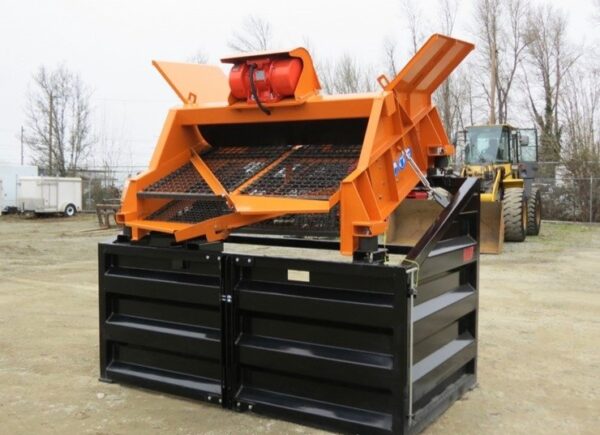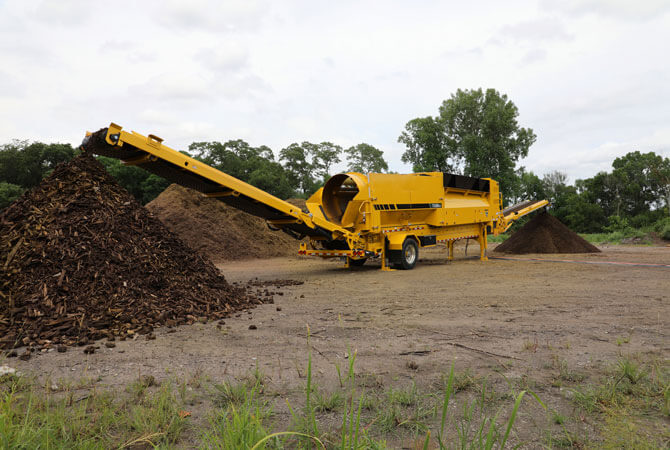Unleash the Power of Precision: Acquire the Ideal Dirt Screen for Sale Today
Unleash the Power of Precision: Acquire the Ideal Dirt Screen for Sale Today
Blog Article
Enhance Product Recovery With State-Of-The-Art Dirt Screens for Recycling Facilities
In today's globe, where environmental sustainability is a pressing worry, recycling centers play a critical role in reducing waste and conserving sources. However, optimizing material recovery can be an intricate process, usually impeded by the visibility of dirt and particles in the reusing stream. This is where state-of-the-art dirt displays enter play, using a promising solution to improve material healing prices. By efficiently dividing undesirable impurities, these innovative displays hold the prospective to transform reusing centers' operations. But exactly how specifically do dust displays enhance product recuperation? What are the essential features that make them state-of-the-art? And just how can reusing centers execute them effectively? In this conversation, we will check out the response to these inquiries and look into real-life situation studies that highlight the successful combination of dust screens in reusing facilities. Prepare to find the transformative power of state-of-the-art dust displays and their influence on enhancing product healing.
The Value of Dust Screens in Recycling Facilities
Dust screens play a vital role in recycling centers by effectively separating dirt and various other pollutants from recyclable materials. These displays, also referred to as trommel screens, are developed to efficiently remove unwanted debris and ensure that useful and only clean materials are processed even more.
The main feature of dust screens is to divide larger items of dirt, rocks, and various other non-recyclable things from the stream of materials. By doing so, they prevent these pollutants from getting in the recycling process and potentially harmful devices or jeopardizing the high quality of the end product.
Furthermore, dust displays assist to improve the general effectiveness of recycling procedures. By eliminating dust and other contaminants early in the process, the screens decrease the amount of hands-on labor called for to sort and clean up the materials later. This not just saves time but additionally enhances and decreases costs productivity.
In addition, using dust displays adds to ecological sustainability. By making sure that unpolluted and just tidy materials are refined, reusing facilities can generate higher-quality recycled items. This, in turn, motivates the usage of recycled materials in various industries, minimizing the need for virgin resources and reducing the ecological influence of source extraction and manufacturing processes.
Just How Dirt Screens Improve Product Healing
Utilizing dirt screens in recycling centers significantly boosts the process of product healing. These displays play a critical role in dividing dust, debris, and various other unwanted products from the recyclable stream, leading to improved effectiveness and better outcome.
One of the major methods which dust displays boost material recovery is by getting rid of contaminants that can impede the recycling process. Dust, rocks, and other non-recyclable products can trigger damage to tools, lower the efficiency of subsequent sorting processes, and pollute the last recycled materials. By properly evaluating out these contaminants, dust screens aid guarantee that the recyclable materials remain pure and of premium quality.
Furthermore, dirt displays allow recycling centers to recover a greater amount of valuable materials. By eliminating dirt and debris, the displays permit a more accurate sorting procedure, boosting the recovery rate of recyclable products. This indicates that better resources can be reclaimed and recycled, minimizing the demand for virgin materials and lessening the ecological impact related to their removal and manufacturing.
Along with enhancing product recovery, dirt screens likewise contribute to the general performance of reusing centers. By stopping equipment damage and lowering downtime triggered by obstructions and blockages, these screens aid maintain a smooth and undisturbed recycling process. This boosted effectiveness converts right into cost financial savings and permits for higher throughput, eventually improving the earnings and sustainability of recycling operations.
Secret Functions of State-of-the-Art Dust Screens
To additionally boost the efficiency and performance of product recuperation in explanation reusing centers, modern dust displays are furnished with crucial functions that enhance the separation process and ensure the highest top quality result (dirt screen for sale). These attributes include sophisticated screening modern technology, personalized setups, and robust building
One key function of advanced dirt screens is their innovative testing modern technology. These displays are developed with precision-engineered mesh or perforated plates that efficiently separate dirt and debris from the recyclable products. The size and spacing of the openings in the screens can be customized to suit different kinds of materials, permitting reliable splitting up and optimum healing prices.
One more crucial attribute of these dust screens is their customizable setups. Recycling centers can readjust the speed, angle, and amplitude of the displays to enhance the splitting up procedure. This versatility enables drivers to adjust the screens according to the particular requirements of the materials being refined, leading to boosted accuracy and greater recovery prices.
Additionally, state-of-the-art dirt screens read this article are developed with durable building to withstand the harsh problems of recycling centers. They are made from durable materials such as stainless-steel or high-strength alloys, making sure longevity and very little downtime as a result of maintenance or repair work. Additionally, these screens are made with easy gain access to for cleaning and upkeep, decreasing and helping with reliable procedures downtime.
Actions to Implementing Dirt Screens in Recycling Facilities
What are the essential steps for including dirt displays right into reusing facilities? Executing dust displays in reusing centers entails a systematic strategy to guarantee efficient installment and procedure. The following are the essential actions to successfully incorporate dirt displays:
Evaluation: Conduct a complete analysis of the center's demands and demands to determine the suitable dust display specifications. Think about variables such as product type, volume, and desired splitting up performance.

Installment: Prepare the facility for the setup of the dust displays. This may include retrofitting existing tools or creating space for new installations. Adhere to producer standards and make certain proper alignment and combination with the reusing procedure.
Checking and Calibration: Once the dirt screens are mounted, perform comprehensive screening to make sure correct performance. dirt screen for sale. Adjust the system to achieve desired splitting up performance and decrease material loss
Training and Maintenance: Train personnel on operating and preserving the dust screen system. Establish a normal upkeep schedule, including cleansing and inspection, to make sure optimum performance and long life.

Case Research Studies: Successful Product Recovery With Dirt Screens
Incorporating dirt displays into reusing centers has actually confirmed to be a successful approach for accomplishing reliable material healing, as demonstrated by a number of study. These instance studies highlight the positive effect of dirt displays on the total recycling process.
By executing dust displays, the center was able to significantly decrease the amount of contamination in their recyclable materials. The introduction of dirt screens likewise assisted to tear and decrease the wear on sorting equipment, decreasing maintenance costs and downtime.
An additional situation research showcases a country recycling center that had problem with excessive dirt and debris in their incoming waste stream. By installing dust displays, the facility was able to eliminate a big portion of the unwanted products, leading to cleaner recyclables and boosted efficiency in the arranging procedure. This caused higher material healing rates and reduced waste sent out to the land fill.
These instance studies demonstrate that incorporating dust screens into reusing centers can have a substantial favorable effect on material recuperation. By successfully his response eliminating dirt, debris, and various other impurities, recycling facilities can enhance their general recycling rates, minimize garbage dump waste, and maximize the value of recovered products.
Conclusion
Finally, using state-of-the-art dust screens in recycling centers is essential for improving product healing. These displays properly eliminate dirt and particles, allowing for the reliable splitting up and recuperation of beneficial materials. By implementing dust displays, recycling centers can substantially improve their reusing processes and add to a much more sustainable future.
One of the primary ways in which dirt displays improve product recovery is by eliminating contaminants that can impede the reusing process. By successfully screening out these impurities, dirt displays aid make certain that the recyclable materials continue to be pure and of high quality.
Additionally, dirt displays enable reusing centers to recover a higher amount of important products.In enhancement to improving material healing, dust screens likewise add to the overall efficiency of reusing facilities.In final thought, the usage of state-of-the-art dirt screens in reusing facilities is critical for enhancing material healing.
Report this page